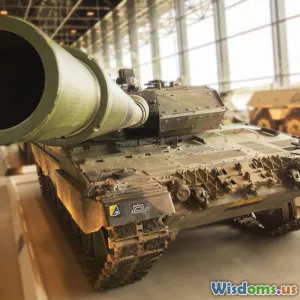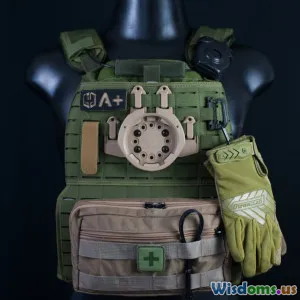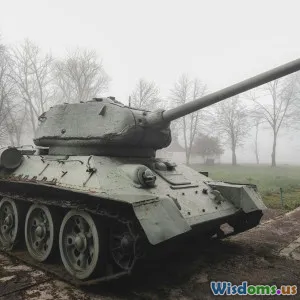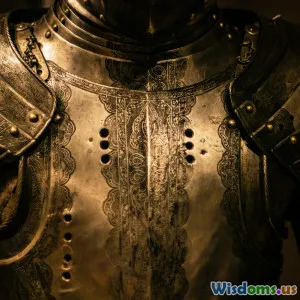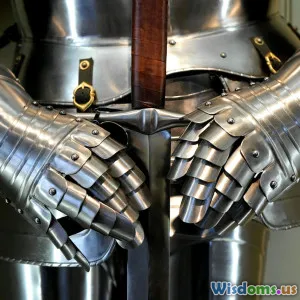
What The Medieval Knights Taught Us About Modern Armor
9 min read Explore how medieval knights’ armor innovations influence today's modern protective gear, from design principles to materials science breakthroughs. (0 Reviews)
What The Medieval Knights Taught Us About Modern Armor
Armor conjures images of towering knights in gleaming steel, battling valiantly in medieval fields. Though centuries old, the legacy of medieval knight armor goes beyond romantic historical tropes; it offers profound insights into the development of modern protective gear. This article explores how the craftsmanship, materials, and strategies embodied by knights not only defined an era but continue to inform and inspire armor technology today.
Introduction: The Enduring Legacy of the Medieval Knight
When one thinks about the evolution of armor, the mediev al knight’s restlessly innovative metal attire serves as a monumental chapter. Their armor represented a pinnacle of technological and artistic design, intended to protect against the barbaric weaponry of their times while granting enough mobility to survive and triumph. Understanding this historical armor reveals how many principles from their design still resonate in modern armor used by military personnel, law enforcement, and even athletes.
Sparking Curiosity: Why Should We Care?
You might ask, why should armor from hundreds of years ago matter in today’s world? Modern armor benefits heavily from underlying concepts established by medieval prototypes—customization, material layering, weight distribution, and impact dispersion. The journey from heavy, forged steel suits to lightweight, bullet-resistant vests is a testament to continuous human ingenuity, making the knights' lessons surprisingly relevant.
The Foundations of Medieval Armor Design
The evolution of medieval armor was not accidental but the result of deliberate problem-solving.
Layers of Protection: Chainmail and Plate Armor
Early knights wore chainmail — interlinked iron rings that balanced mobility and defense. It was immensely flexible, allowing for natural movement, but its defence against blunt trauma was limited. The introduction of plate armor revolutionized personal defense. By layering articulated steel plates, knights could deflect blows, reduce damage from crushing weapons, and maintain agility.
Weight Distribution: From Encumbrance to Efficiency
A full suit of knight armor weighed between 45 to 55 pounds, but its ingenious joint designs redistributed weight evenly across the body, preventing fatigue during prolonged combat. Evidence from period treatises, such as The Art of Armour by Carl Walburg, illustrates attention to ergonomic detail, indicating that combat effectiveness was tied directly to wearer comfort.
Adaptive Customization
Armorers tailored suits to fit individual knights, adjusting thickness and plate shape depending on role and expectations. Variability in armament during different conflicts showed that adaptive design in armor was already a priority. For example, heavy cavalry armor differed from that of infantry knights, much like today's customized armor solutions.
Materials Innovation: Hard Steel and Flexible Design
The materials used by medieval blacksmiths offer surprising parallels to modern development.
Metallurgy Expertise
Medieval smiths perfected layered steel techniques such as damascening and pattern welding, combining resilience and flexibility. Modern armor manufacturing similarly utilizes composite layering to achieve both protection and weight savings. The classical approach of controlling carbon content to optimize hardness without sacrificing brittleness laid groundwork for steel grades used in today’s helmets and vehicle armor.
Balancing Rigidity and Mobility
Contrary to popular belief, medieval armor was fashioned not just for toughness but for strategic flexibility. Jointed plates connected by rivets and leather allowed complex movement. This mirrors the segmented designs of modern modular armor systems that cater both to protection segments and functional movement.
Protection Against Projectiles and Blunt Force
Medieval armor was designed to withstand arrows, swords, and maces. The expertise demonstrated by knight armor informs contemporary ballistic armor's ability to defend against different types of threats. Materials such as ultra-high molecular weight polyethylene (UHMWPE) and ceramics mimic the approach of preventing penetration while significantly dampening impact.
Translating Medieval Lessons to Modern Armor
The fundamental challenges of armor remain largely the same: provide effective protection while preserving operational capability. Modern armor embraces these age-old principles with new technologies.
Bulletproof Vests and Plate Carriers
Today’s ballistic vests owe conceptual debt to the layered protection of chainmail and plate armor.
- Material layering: Modern vests use multiple layers of strong fibers, much like knights layered chainmail beneath plates.
- Modularity: Plate carriers allow soldiers to add or remove ballistic plates to suit mission needs—a modern echo of customizing armor thickness and coverage as knights once did.
Impact Dispersion Mechanisms
Blunt trauma is a persistent threat despite penetration resistance. Knights designed articulated joints allowing limited movement to disperse force; modern armor features shock-absorbent liners and gel inserts serving a parallel role to reduce injury from concussive blows.
Environmental Adaptations
Knights sometimes coated or painted their armor for rust protection and camouflage. This core idea persists with contemporary coatings that improve armor resilience to corrosion and add infrared suppression, balancing protection with battlefield advantages.
Modern Innovations Inspired By Knight Armor Principles
Smart Armor Technologies
Emerging smart armor integrates sensors and adaptive materials—a conceptual step beyond simply mechanical protection. The modular nature of medieval armor allowed incremental upgrades, similar to replacing or enhancing components in smart armor for real-time threat detection.
Exoskeleton Support Systems
One limitation of medieval armor was physical exhaustion from its weight. Modern powered exoskeletons augment human strength and endurance, addressing longstanding challenges knights knew well. This innovation enables soldiers to carry heavier armor and equipment with less fatigue.
Cross-domain Design Principles
Lessons from knights inform protective gear beyond the battlefield. Motorcyclists' jackets emulate layering and padding; sports gear applies similar force dispersion. These cross-application uses show medieval armor’s legacy transcends military domains.
Conclusion: The Enduring Knowledge of Medieval Craftsmanship
Medieval knights designed armor not only to survive but to thrive under severe conditions of war. Their success in blending protection, mobility, and customization carries remarkable relevance today. Examining their approach reveals engineering principles and craftsmanship that provided a blueprint for modern armor solutions.
By understanding the sophistication embedded in medieval armor design, designers and engineers can continue evolving protective technology, always respecting the balance between defense and functionality. In a sense, the armor-clad knights fight on, not on battlefields of old, but within the materials, structures, and systems protecting people in today’s complex world.
References:
- Walburg, C. The Art of Armour (2001)
- Nicolle, D. Medieval Warfare Source Book (1995)
- Department of Defense strategies on body armor technology, (Current reports, 2020-2024)
- Research articles on UHMWPE composite usage in modern ballistic armor
Takeaway: The evolution from chainmail to ceramic ballistic plates reflects centuries of accumulated knowledge, underscoring that thoughtful protection optimized for human use remains a universal and timeless engineering challenge.
Rate the Post
User Reviews
Popular Posts










